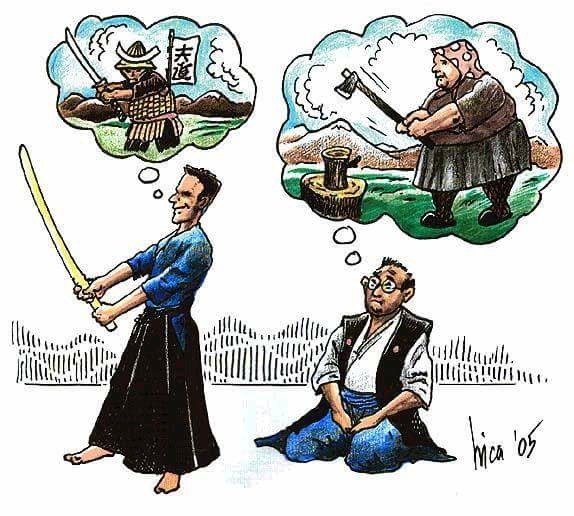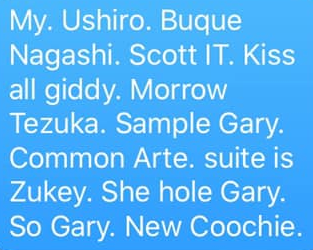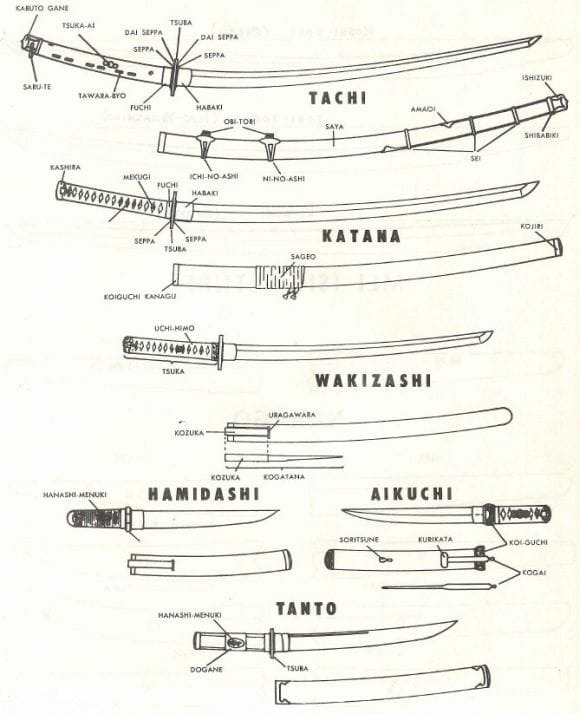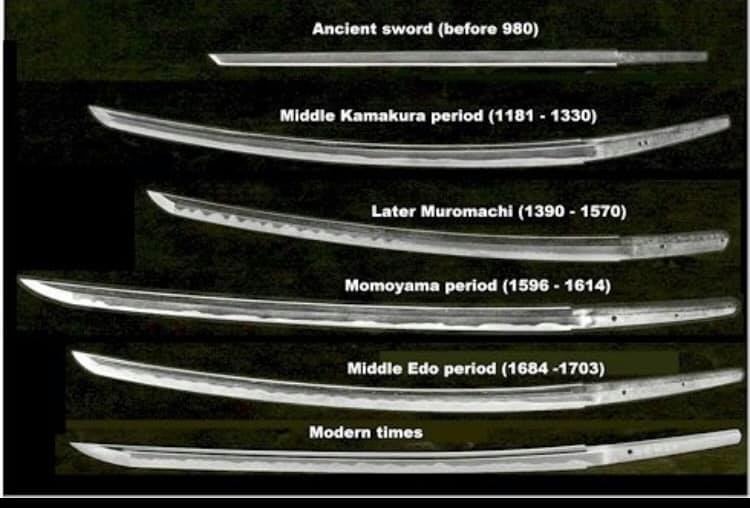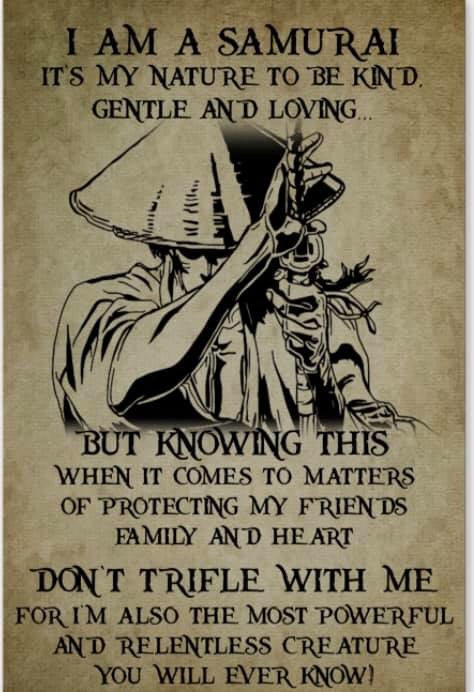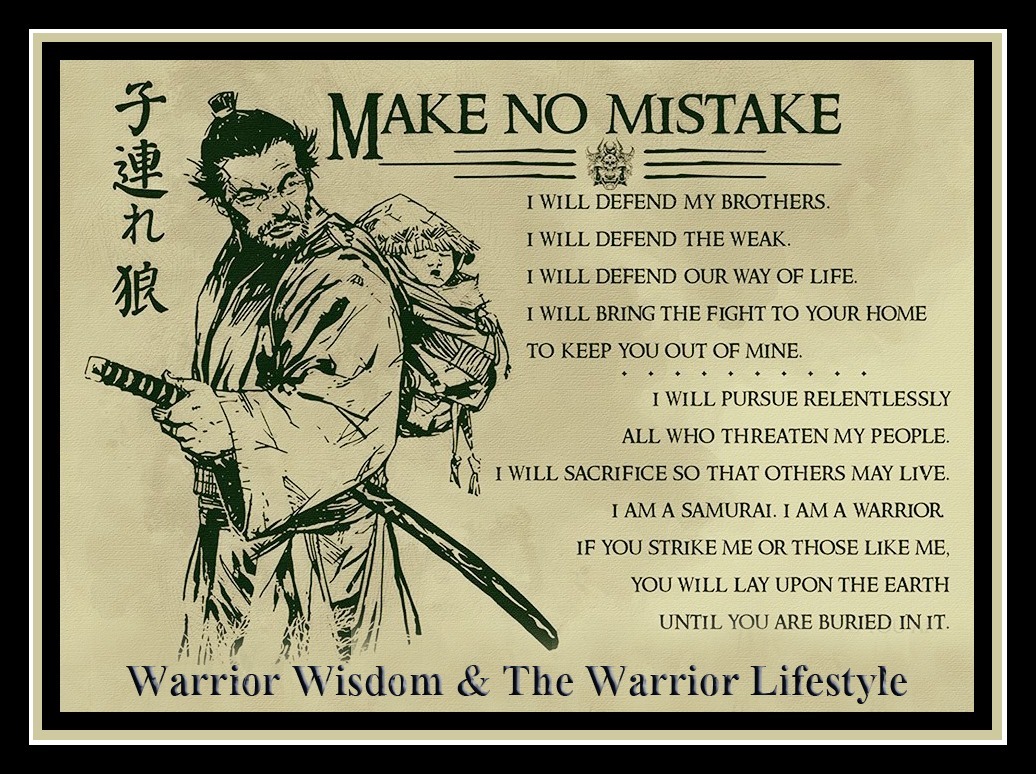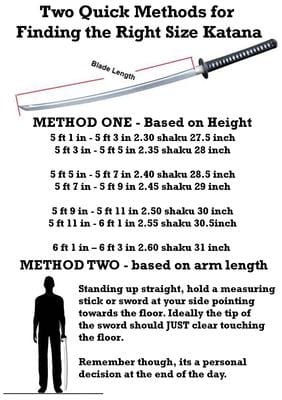Iaido is a Japanese martial art associated with the smooth, controlled movements of drawing the sword from it's Saya (scabbard), striking or cutting an imaginary opponent and wiping the blood from the blade before putting it back into the Saya.
I = being, AI = harmony, DO = way
"The way of harmonizing oneself in action"
Ikigai "The sense that your life is worth living"
……………………………………………………………………………
"Let the sword swing you."
Taylor Sensei
……………………………………………………………………………
"Be in kamae all the time."
Taylor Sensei
……………………………………………………………………………
"Kamae is not just for Christmas, it's forever!"
Taylor Sensei
……………………………………………………………………………
"Do you practice to practice, or do you practice to change?"
Mansfield Sensei
……………………………………………………………………………
"Good iai is felt, poor iai is seen."
Mansfield Sensei
……………………………………………………………………………
"The point of buda is to make the effort."
Mansfield Sensei
……………………………………………………………………………
"Stand in a corner (facing the corner) and feel what's going on around you."
Taylor Sensei
……………………………………………………………………………
"Do you have a sense of freedom when you practice?"
Mansfield Sensei
……………………………………………………………………………
Three questions you should ask yourself.
1. Where is the opponent?
2. What is he doing?
3. Can I do what I need to do before he does what he wants to do?
Mansfield Sensei
……………………………………………………………………………
"Are you really using the sword?"
Mansfield Sensei
……………………………………………………………………………
"Master the sword, not the kata"
Mansfield Sensei
……………………………………………………………………………
"Practice FOR practice"
Taylor Sensei
You practice because that's what you're doing, and you do it because that's what you do.
……………………………………………………………………………
"Know what you are doing and do it."
Unknown
……………………………………………………………………………
"Not blinking during a kata is a form of intimidation."
Unknown
……………………………………………………………………………
I see them in their numbers
the leaders
the teachers
the fighters
I see their photographs
and their acolytes singing
their endless praises
Yet the best men
I have ever met
never sought recognition
let alone fame
never asked for praise
they only talked
and practiced
and sometimes taught
Their followers were few
but faithful
You will perhaps not know them
for they have learned
and do not seek
what so many others seek
they do not ask for their 15
~~
Kim Taylor Apr 29, 2021
……………………………………………………………………………
Chinese Calligraphy and Iaido
Chinese calligraphy is the writing of Chinese characters as an art form, combining purely visual art and interpretation of the literary meaning.
Iaido is a Japanese martial art that emphasizes being aware and capable of quickly drawing, cutting and sheathing of the sword.
Can these two art forms, which appear to be totally different from each other, have any common elements?
Chinese characters combine a series or group of brush strokes to represent a word or expression. The basic element of the brush stroke is either a dot or a line. There can be many variations of brush strokes.
Iaido combines a pattern of techniques which is called a kata. Although there is a greater number of Chinese characters compared to the number of Iaido kata there are similarities. Characters can be “written” in different script styles. Certain kata can be performed in a different style or school. This does not apply to all kata whereas all Chinese characters can be illustrated in a different script.
Chinese characters are composed of a variety of elements. Dots and strokes are combined to form a character. For each script style there are various different types of dots and strokes. For each kata in Iaido there are also various different elements. These elements vary depending upon the school from which the kata originates.
Each of the two art forms require correct form and patience. You might improve your skill but with most things you will never be a master. There is always room for improvement. You must hold the sword properly just as you must hold your brush properly. The grip is surprising similar for both art forms. The correct grip should be soft and flexible. If the grip is too forceful you will not have efficient range of movement.
For Iaido it is important to have correct body posture. As a general rule, your hips should be square to your opponent. Your feet should be properly aligned, your shoulders relaxed and your mind aware of your surroundings. The same applies to calligraphy. You should sit (or stand) squarely facing the paper upon which you will be painting. Yes, you are actually painting. You may not be painting a landscape but you are still painting a character. The brush is held firmly but not tightly. There should be flexibility in your wrist, arm and shoulder. The same concept applies to Iaido.
When painting you must visualize the proper size and placement of each character. Iaido requires you to visualize your invisible opponent so that you can place your sword at the proper position during the various elements of the kata. For each art there is a certain flow to your movements. The beauty of each is expressed with the movement and timing of motion. With greater experience comes greater achievement.
With Iaido and calligraphy there is a certain form of opening or beginning. For Iaido there is a beginning and ending etiquette. For calligraphy one must be in the proper mindset to begin. Visualize what you are going to paint. Even if you are “just practicing” you should practice as if it was the “real” thing or demonstration. Both art forms should have a certain amount of calmness but should also show determination. Practice your techniques so that they become natural.
Without going into greater detail of either art form, are there similarities between Iaido and calligraphy?
The more I practice each I have realized that they are almost one and the same.
……………………………………………………………………………
*…………………………………………………………………………
"It's not about speed but timing."
Miyamoto Musachi
……………………………………………………………………………
"Don't obsess if you want to progress"
Taylor Sensei
……………………………………………………………………………
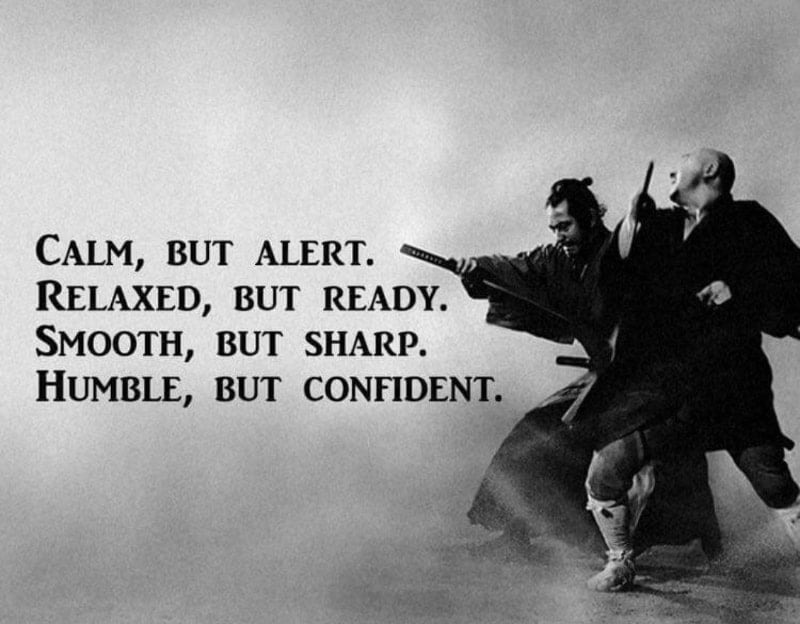
……………………………………………………………………………
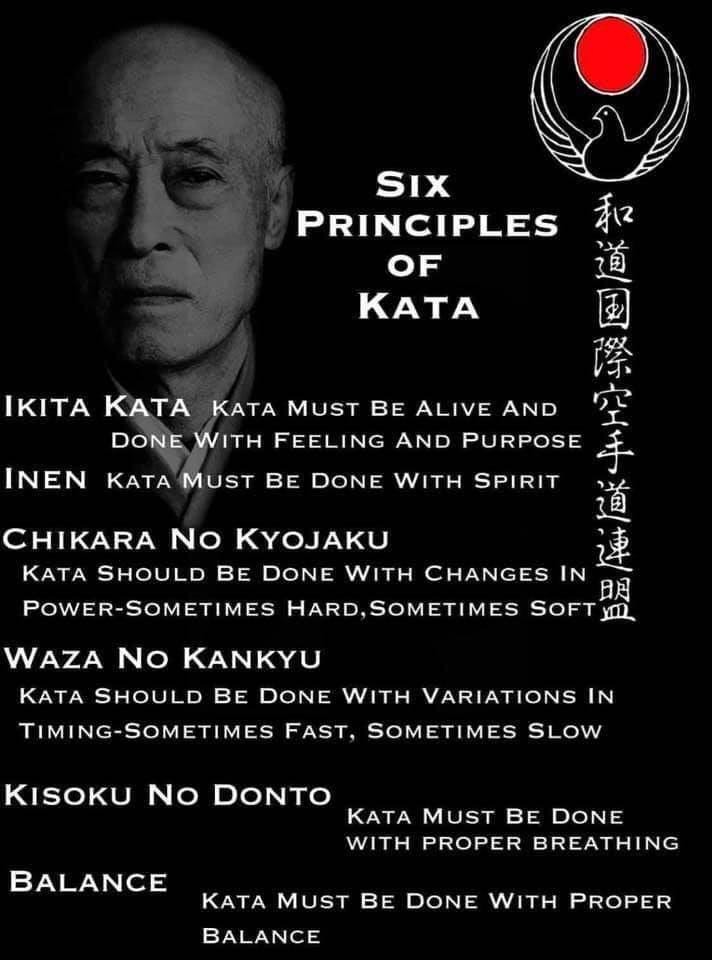
……………………………………………………………………………
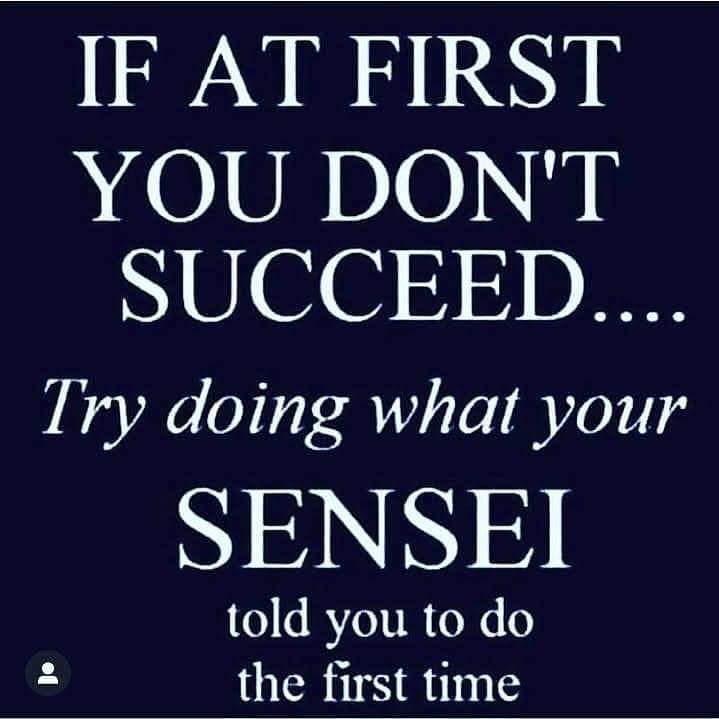
……………………………………………………………………………
"Do Budo, not a dance"
Ohmi Sensei
……………………………………………………………………………
"To know ten thousand things, know one well."
Miyamoto Musachi
……………………………………………………………………………
The devil whispered: "You can't withstand the storm."
The warrior replies: "I am the storm."
……………………………………………………………………………
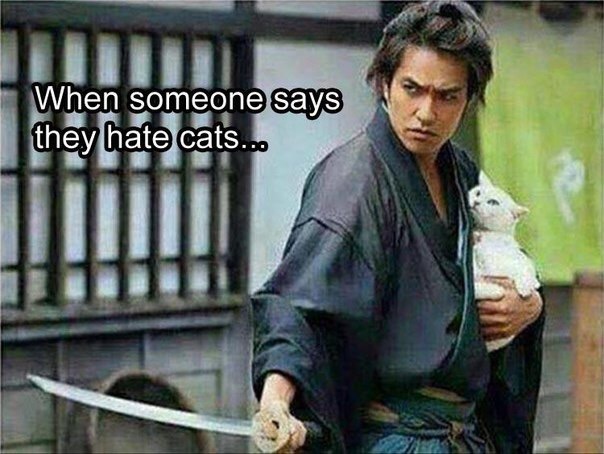
……………………………………………………………………………
"Rise like smoke, sink like frost"
Ohmi Sensei
……………………………………………………………………………
"Kata teach you what Iaido is"
Taylor Sensei
……………………………………………………………………………
"Get out from under the sword!"
Taylor Sensei
……………………………………………………………………………
"Win first, then cut."
Ohmi Sensei
……………………………………………………………………………
"Don't act… you have an opponent!"
Ohmi Sensei
……………………………………………………………………………
If someone points at your black uniform and asks whose funeral it is, you just look around the room and answer "I haven't decided yet."
……………………………………………………………………………
"One cannot use technique effectively if the heart is not taking part in the fight." (Shin Gi Ichi Nyo)
……………………………………………………………………………
ZKNR (Def'n) Iai – Setei Iai
1. Mae – Front. Commencing from a kneeling position, forestalling a frontal attack.
2. Ushiro – Rear. Commencing from a kneeling position, forestalling an attack from the rear.
3. Ukenagashi – Receive, Parry and Cut. Commencing from a kneeling position, parrying an attack from the left.
4. Tsuka-ate – Striking with the tsuka. Commencing from tatehiza, seated position, forestalling two attackers, front and rear.
5. Kesa-giri – Diagonal Cut. Commencing from a standing position, forestalling an approaching attacker.
6. Morote-tsuki – Two-Hand Thrust. Commencing from a standing position, forestalling three approaching attackers, two in front and one behind.
7. Sanpo-giri – Three Direction Cut. Commencing from a standing position, forestalling three approaching attackers, one each to the right, left and front.
8. Ganmen-ate – Hit to the Face. Commencing from a standing position, forestalling two approaching attackers, front and rear.
9. Soete-zuki – Joined Hand Thrust. Commencing from a standing position, forestalling an attack from the left.
10. Shiho giri – Four Direction Cutting. Commencing from a standing position, forestalling four approaching attackers.
11. Sou giri – Complete Cuts. Five different and complete cuts. Commencing from a standing position.
12. Nuki uchi – Sudden Draw. Avoid, then respond to an attack from the front. Commencing from a standing position.
